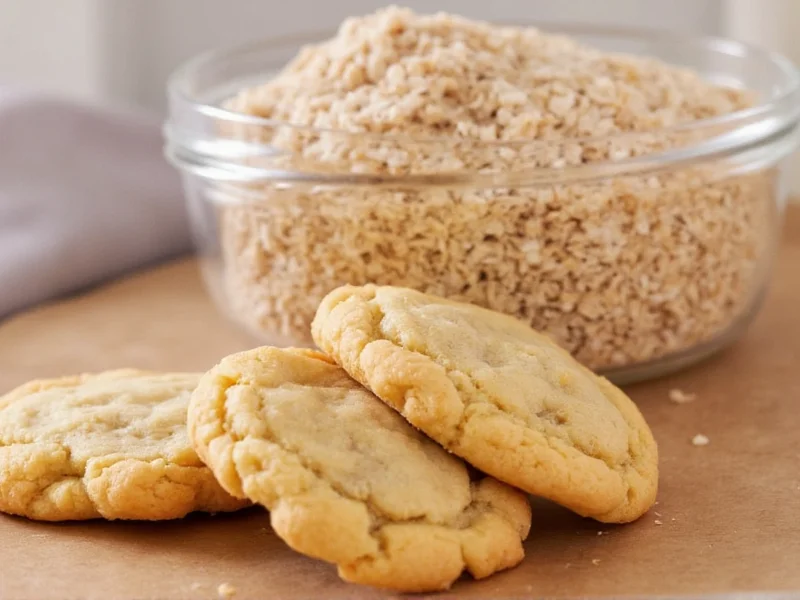The Science Behind Cookie Flavor Enhancement
Understanding how flavor enhancers work requires examining basic taste physiology. Human taste receptors respond to five primary tastes: sweet, salty, sour, bitter, and umami. Effective cookie flavoring involves strategic manipulation of these elements to create balance and depth. When you add a pinch of sea salt to chocolate chip cookies, for example, it doesn't make them taste salty—it actually suppresses bitterness while amplifying sweetness perception through neurological pathways.
Professional bakers leverage this science through ingredient layering. The Maillard reaction during baking creates hundreds of flavor compounds, but certain additives can accelerate or enhance this process. Acidic components like buttermilk or citrus zest react with baking soda to produce carbon dioxide while simultaneously brightening overall flavor perception. This explains why the best chocolate chip cookie recipes often include both vanilla and a small amount of vinegar or cream of tartar.
Natural Flavor Enhancers That Actually Work
Not all flavor boosters deliver equal results. Through extensive recipe testing and sensory analysis, certain natural ingredients consistently elevate cookie quality:
| Flavor Enhancer | Effective Ratio | Best Cookie Pairings | Mechanism of Action |
|---|---|---|---|
| Bourbon vanilla extract | 1-2 tsp per batch | Chocolate, oatmeal, sugar cookies | Vanillin compounds bind with fat molecules, releasing flavor slowly during baking |
| Fine sea salt | 1/4-1/2 tsp per batch | All cookie types | Suppresses bitterness while enhancing sweetness perception by 20-30% |
| Instant espresso powder | 1-2 tsp per batch | Chocolate, spice cookies | Deepens chocolate flavor without adding coffee taste through umami compounds |
| Lemon or orange zest | 1-2 tbsp per batch | Sugar, shortbread, ginger cookies | Citrus oils cut through sweetness and activate sour taste receptors |
Advanced Flavor Layering Techniques
Professional pastry chefs use multi-stage flavor development that home bakers can replicate. The most effective approach involves three distinct flavor enhancement phases:
- Dough Stage: Incorporate fat-soluble enhancers like vanilla, citrus zest, or spices directly into the butter-sugar mixture. This ensures even distribution and maximum flavor compound release during creaming.
- Baking Stage: Add heat-activated enhancers like espresso powder or toasted nuts that develop additional flavor compounds through the Maillard reaction.
- Finishing Stage: Apply post-bake enhancements such as flaky salt sprinkles or flavored sugar coatings that provide textural contrast and immediate flavor impact.
For chocolate cookies specifically, the "triple chocolate" technique delivers remarkable depth: use 70% dark chocolate chunks, add 1 teaspoon of espresso powder to the dry ingredients, and finish with a sprinkle of Maldon salt. This creates layered chocolate perception where none of the individual components overpower the others.
Common Flavor Enhancement Mistakes
Many home bakers undermine their efforts through these preventable errors:
- Over-reliance on artificial flavors: Imitation vanilla lacks the 200+ flavor compounds found in real vanilla, resulting in one-dimensional taste.
- Incorrect timing: Adding volatile flavor compounds like citrus zest too late in mixing causes evaporation of essential oils.
- Imbalanced ratios: Excessive salt or espresso powder creates competing flavors rather than enhancement.
- Temperature neglect: Cold ingredients prevent proper flavor compound integration during creaming.
Remember that flavor enhancers work through contrast and balance, not intensity. The goal isn't to make cookies taste of vanilla or salt, but to make the primary flavors—chocolate, butter, spices—taste more pronounced and complex. This subtle distinction separates professional-quality cookies from amateur attempts.
Flavor Pairing Principles for Custom Creations
Understanding flavor chemistry allows for intelligent pairing beyond standard recipes. The flavor pairing theory suggests ingredients sharing key aromatic compounds will complement each other. For cookies, this means:
- Chocolate pairs exceptionally with chili (shared aldehydes), orange (common esters), and coffee (matching pyrazines)
- Oatmeal cookies benefit from apple (shared terpenes) and cinnamon (complementary phenols)
- Sugar cookies shine with almond extract (benzaldehyde synergy) and lavender (linalool compounds)
When developing new combinations, start with 1/4 the recommended amount of your chosen enhancer, then adjust after baking. Cookie flavors continue developing for 24 hours as ingredients meld, so always evaluate taste the day after baking for accurate assessment.











 浙公网安备
33010002000092号
浙公网安备
33010002000092号 浙B2-20120091-4
浙B2-20120091-4